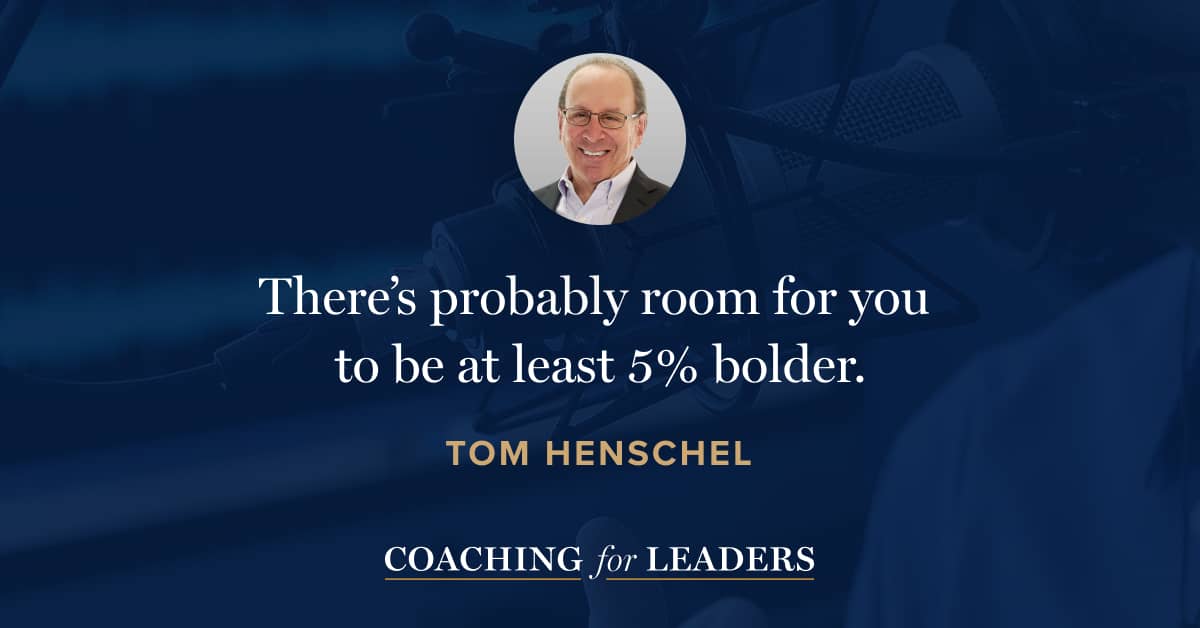Tom Henschel: The Look & Sound of Leadership
Tom Henschel of Essential Communications supports senior leaders and executive teams. An internationally recognized expert in the field of workplace communications and self-presentation, he has helped thousands of leaders achieve excellence through his work as an executive coach and his top-rated podcast, The Look & Sound of Leadership.
Have you been told you should take more initiative? Or, perhaps you’ve been telling that to someone else? Either way, this conversation with Tom Henschel will outline three key steps to help you get started.
Key Points
Three steps to taking more initiative:
- Think and talk about your work. Ideas come through conversation.
- Execute on your idea. Feel the fear and do it anyway.
- Communicate what you’ve done.
- Initiative is often in the eye of the beholder.
- Imagine a scale that goes from bold to cautious. There’s probably room for you to be at least 5% bolder.
- Feeling like you are waiting on others may be an indicator to take initiative.
- To calibrate where you land, ask yourself: “What’s my typical pattern?”
- In correspondence, consider asking fewer questions and making more statements.
- Place yourself in situations where you’ll need to show initiative.
Resources Mentioned
- The Look & Sound of Leadership podcast by Tom Henschel
- Feel the Fear…and Do It Anyway* by Susan Jeffers
Related Episodes
- Leadership vs. Management (The Look & Sound of Leadership, episode 166)
- 5 Strategies for Dealing with Narcissists (The Look & Sound of Leadership, episode 239)
- How to Answer “Tell Us About Yourself” (The Look & Sound of Leadership, episode 250)
- How to Talk So People Understand You (The Look & Sound of Leadership, episode 254)
Discover More
Activate your free membership for full access to the entire library of interviews since 2011, searchable by topic. To accelerate your learning, uncover more inside Coaching for Leaders Plus.





